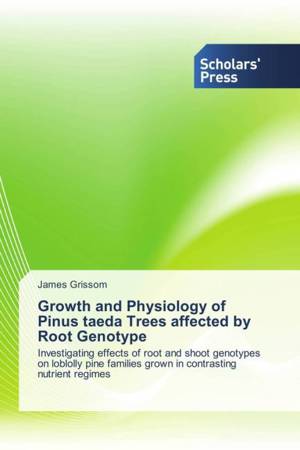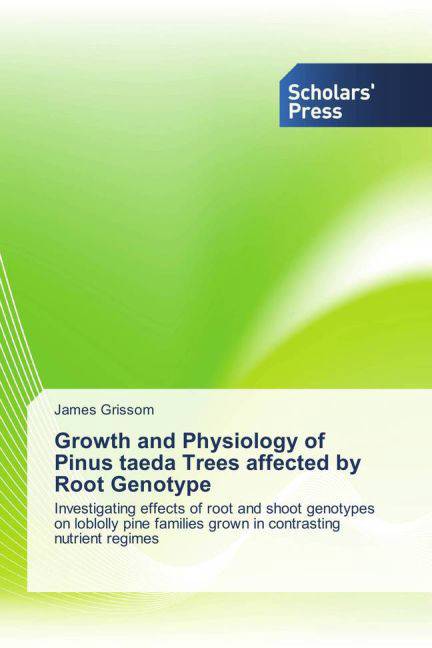
- Afhalen na 1 uur in een winkel met voorraad
- Gratis thuislevering in België vanaf € 30
- Ruim aanbod met 7 miljoen producten
- Afhalen na 1 uur in een winkel met voorraad
- Gratis thuislevering in België vanaf € 30
- Ruim aanbod met 7 miljoen producten
Zoeken
Growth and Physiology of Pinus taeda Trees affected by Root Genotype
Investigating effects of root and shoot genotypes on loblolly pine families grown in contrasting nutrient regimes
James Grissom
Paperback | Engels
€ 59,45
+ 118 punten
Omschrijving
Effects of root and shoot genotypes on productivity and physiology of loblolly pine (Pinus taeda L.) seedlings were evaluated in contrasting nutrient regimes. Twelve-week-old seedlings from contrasting provenances were grafted reciprocally to facilitate distinction of rootstock and scion effects. Five families each from mesic and xeric regions were planted in a split-plot design on a nutrient-poor site. Half of the plots were fertilized annually. Total biomass production among families was positively related to proportional biomass allocation to roots. Rootstock did affect stem growth efficiency. Different root genotypes were associated with subtle changes in biomass allocation. Provenances differed in leaf stomatal conductance but not in net photosynthesis. Rootstock affected stomatal conductance, but not WUE of scions. Rootstocks also affected leaf carbon isotope content (C13), in that xeric rootstocks were associated with lower C13. The findings may have utility in genotype selection for environments where soil water limits growth. Results should be informative and useful for tree biology scientists, plant breeders, and plant physiologists.
Specificaties
Betrokkenen
- Auteur(s):
- Uitgeverij:
Inhoud
- Aantal bladzijden:
- 116
- Taal:
- Engels
Eigenschappen
- Productcode (EAN):
- 9783639702453
- Verschijningsdatum:
- 12/12/2013
- Uitvoering:
- Paperback
- Afmetingen:
- 150 mm x 220 mm
- Gewicht:
- 181 g

Alleen bij Standaard Boekhandel
+ 118 punten op je klantenkaart van Standaard Boekhandel
Beoordelingen
We publiceren alleen reviews die voldoen aan de voorwaarden voor reviews. Bekijk onze voorwaarden voor reviews.











